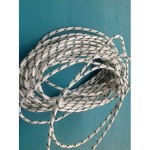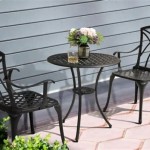Patio Herb Planters: Cultivating Fresh Flavors at Home
The allure of fresh herbs, readily available and bursting with flavor, is a strong motivator for many home gardeners. For individuals with limited outdoor space, patio herb planters offer an ideal solution. These planters facilitate the cultivation of a variety of herbs, bringing the garden closer and enriching culinary experiences. The strategic placement of these planters can transform a patio, balcony, or small yard into a productive and fragrant oasis. This article will explore key considerations for selecting, preparing, and maintaining patio herb planters.
Selecting the Right Patio Herb Planter
The selection of an appropriate patio herb planter is crucial for the success of the garden. Several factors warrant careful assessment, including planter material, size, drainage, and aesthetic appeal. Each of these elements impacts the health and productivity of the herbs.
Material: Planters are available in a range of materials, each with its own set of advantages and disadvantages. Terracotta pots are porous, allowing for good aeration and drainage. However, they can dry out quickly and are susceptible to cracking in freezing temperatures. Plastic planters are lightweight, durable, and retain moisture well, but they may not be as aesthetically pleasing as other options. Wood planters offer a natural look and provide good insulation for roots, but they are prone to rot and require regular maintenance. Metal planters, such as galvanized steel or aluminum, are durable and weather-resistant, but they can heat up quickly in direct sunlight, potentially damaging the herbs.
Size: The size of the planter should be proportionate to the herbs being grown. Smaller herbs, such as thyme or chives, can thrive in smaller pots, while larger herbs, such as rosemary or mint, require more space for their roots to expand. Overcrowding can lead to stunted growth and reduced yields. Generally, a planter with a depth of at least 6-8 inches is sufficient for most herbs. For larger herbs, a depth of 12 inches or more is recommended.
Drainage: Adequate drainage is essential for preventing root rot. Planters should have drainage holes at the bottom to allow excess water to escape. If the planter does not have drainage holes, they can be added using a drill. Lining the bottom of the planter with a layer of gravel or broken pottery shards can further improve drainage. Additionally, using a well-draining potting mix is crucial for preventing waterlogging.
Aesthetic Appeal: While functionality is paramount, the aesthetic appeal of the planter should also be considered. The planter should complement the overall style of the patio or outdoor space. A wide variety of styles are available, from rustic wooden boxes to sleek modern containers. Choosing planters that enhance the visual appeal of the area can create a more inviting and enjoyable outdoor environment.
Preparing the Patio Herb Planter
Proper preparation is vital for ensuring the health and vitality of the herbs. This includes selecting a suitable potting mix, preparing the planter itself, and choosing appropriate companion plants.
Potting Mix: The type of potting mix used is crucial for providing the herbs with the necessary nutrients and drainage. Garden soil is generally not suitable for container gardening, as it can become compacted and poorly drained. A high-quality potting mix, specifically formulated for containers, is recommended. This type of mix typically contains a blend of peat moss, perlite, and vermiculite, which provide good drainage, aeration, and moisture retention. Adding compost to the potting mix can further enrich it with organic matter and nutrients. Avoid using mixes that are overly heavy or contain excessive amounts of clay.
Preparing the Planter: Before planting, the planter should be thoroughly cleaned to remove any dirt, debris, or lingering pathogens. If the planter has been used previously, it should be disinfected with a solution of diluted bleach to prevent the spread of diseases. Line the bottom of the planter with a layer of landscape fabric to prevent the potting mix from washing out through the drainage holes. This also helps to keep the drainage holes clear and prevents clogging. Fill the planter with the prepared potting mix, leaving a few inches of space at the top. Moisten the soil thoroughly before planting the herbs.
Companion Planting: Companion planting involves strategically placing different herbs together to benefit each other. Some herbs can repel pests, attract beneficial insects, or improve the growth of neighboring plants. For example, basil is a good companion for tomatoes, as it repels tomato hornworms. Marigolds can deter nematodes and other soil pests. Chives can repel aphids and Japanese beetles. When selecting companion plants, it is important to consider their individual needs and ensure that they have similar requirements for sunlight, water, and nutrients. Avoid planting herbs that are known to be incompatible, such as mint and chamomile, as they can inhibit each other's growth.
Maintaining a Thriving Patio Herb Garden
Once the herbs are planted, regular maintenance is essential for ensuring their continued health and productivity. This includes proper watering, fertilization, pruning, and pest control.
Watering: Herbs require consistent moisture, but overwatering can lead to root rot. The frequency of watering will depend on the weather, the type of planter, and the type of herbs being grown. Check the soil moisture regularly by inserting a finger into the soil. If the top inch of soil feels dry, it is time to water. Water thoroughly until water drains out of the drainage holes. Avoid watering the foliage, as this can promote fungal diseases. In hot weather, herbs may need to be watered daily. In cooler weather, watering may only be necessary every few days.
Fertilization: Herbs benefit from regular fertilization, especially when grown in containers. A balanced, water-soluble fertilizer, applied every few weeks, can provide the necessary nutrients. Alternatively, a slow-release fertilizer can be incorporated into the potting mix at the time of planting. Avoid over-fertilizing, as this can lead to leggy growth and reduced flavor. Organic fertilizers, such as compost tea or fish emulsion, are also excellent options for providing nutrients to the herbs. Always follow the manufacturer's instructions when applying fertilizer.
Pruning: Regular pruning is essential for maintaining the shape and vigor of the herbs. Pinching back the tips of the stems encourages bushier growth and prevents the herbs from becoming leggy. Remove any yellowed, brown, or dead leaves to prevent the spread of diseases. Prune herbs regularly to encourage new growth and to prevent them from flowering. Flowering can reduce the flavor and quality of the leaves. When pruning, use sharp, clean scissors or pruning shears to make clean cuts. Avoid tearing or crushing the stems.
Pest and Disease Control: Herbs are generally resistant to pests and diseases, but they can be susceptible to certain problems. Aphids, spider mites, and whiteflies are common pests that can infest herbs. These pests can be controlled with insecticidal soap or neem oil. Fungal diseases, such as powdery mildew and root rot, can also affect herbs. These diseases can be prevented by providing good air circulation, avoiding overwatering, and using a well-draining potting mix. If diseases do occur, remove infected leaves and treat the plants with a fungicide. Regularly inspect the herbs for signs of pests or diseases and take action promptly to prevent the problems from spreading.
By carefully considering these factors, individuals can successfully cultivate a thriving patio herb garden, bringing the fresh flavors and aromas of the garden directly to their homes. The convenience and accessibility of home-grown herbs enhance culinary experiences and provide a connection to nature, regardless of the size of the available outdoor space.

How To Make A Balcony Herb Garden Complete Tutorial

How To Start A Balcony Herb Garden Access S

How To Start A Balcony Herb Garden Access S

Grow A Balcony Garden Full Of Veggies Herbs And Flowers

Easy Diy Patio Herb Garden Step By With S

How To Create And Maintain A Balcony Herb Garden Boss

How To Make A Balcony Herb Garden Complete Tutorial

21 Clever Ways To Build A Garden In Space Patio Herb Pots Planter

How To Grow A Herb Garden On Balcony Airtasker Au

Create A Diy Planter Box And Other Balcony Gardening Ideas








